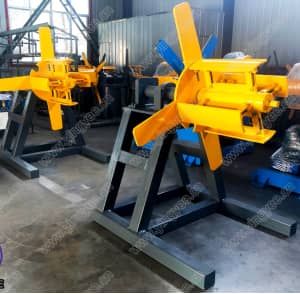
The Cold Bending Process of Metal Decks An Overview of Bending Machines
In the realm of construction and structural engineering, metal decks play a vital role, providing essential support and stability for various applications, from flooring systems to roofing structures. One of the most innovative technologies that aid in the production of metal decks is the cold bending machine. This piece of equipment is engineered to reshape metal sheets through a cold bending process, ensuring precision and structural integrity.
Understanding Metal Decks
Metal decks, typically made from steel or aluminum, are prefabricated sheets that offer strength, durability, and lightweight characteristics. They are designed to support various loads, including those from concrete, tiles, or equipment. The cold bending process allows metal decks to be shaped into specific configurations that fit the architectural requirements of a project. This flexibility in design is one of the significant advantages of using metal decks in construction.
The Cold Bending Process
Cold bending, as opposed to hot bending, involves shaping metal at room temperature. This method retains the material's strength while providing a smooth surface finish. The cold bending machine utilizes specialized rollers and dies to apply pressure on the metal sheets, producing the desired bends and curves without compromising the structural properties of the metal.
Advantages of Cold Bending Machines
1. Precision and Accuracy One of the standout features of cold bending machines is their ability to operate with exceptional precision. Automated systems equipped with advanced CNC (Computer Numerical Control) technology enable manufacturers to achieve exact specifications consistently. This precision is crucial for ensuring that metal decks fit seamlessly into their intended applications.

2. Versatility Cold bending machines can accommodate a variety of materials and thicknesses, making them suitable for different types of projects. Whether it involves standard steel decks or customized architectural designs, these machines can adapt to meet diverse needs.
3. Cost-Effectiveness The efficiency of cold bending machines translates into significant cost savings for manufacturers. The ability to produce high volumes of metal decks quickly reduces labor costs and minimizes waste, leading to enhanced productivity.
4. Enhanced Performance By performing the bending process at lower temperatures, the cold bending method can prevent unwanted alterations in the material’s properties. This leads to better overall performance in applications, as the structural integrity of the metal is maintained.
Applications of Cold Bending Machines
The applications of cold bending machines go beyond simply shaping metal decks. These machines are versatile tools used in various sectors, including
- Construction In constructing high-rise buildings, bridges, and other infrastructure projects, cold bending machines supply custom metal decks that meet specific engineering requirements. - Manufacturing The automobile and aerospace industries also utilize cold bending technology for creating components that require precise dimensions and high durability. - Art and Design In the realm of art and architectural design, cold bending allows for innovative shapes and forms, providing artists and architects the freedom to explore new ideas and aesthetics.
Conclusion
In conclusion, the cold bending machine significantly impacts the manufacturing of metal decks, offering precision, versatility, and efficiency. As the demand for innovative construction methods continues to rise, these machines will remain an integral part of the metalworking industry, shaping the future of building materials and construction techniques. The continued evolution in technology promises further enhancements in the cold bending process, making it an exciting area to watch in the years to come.